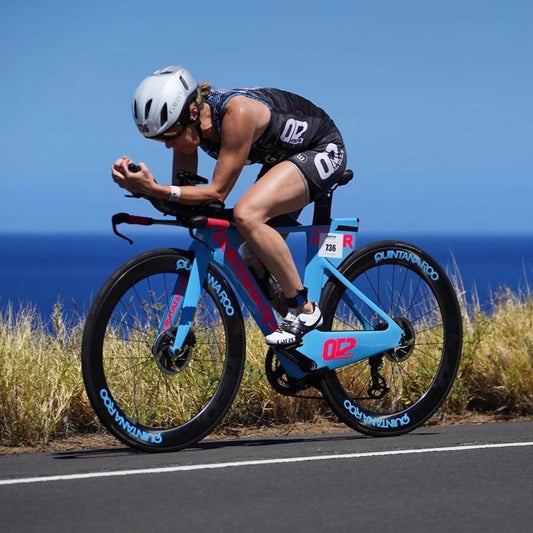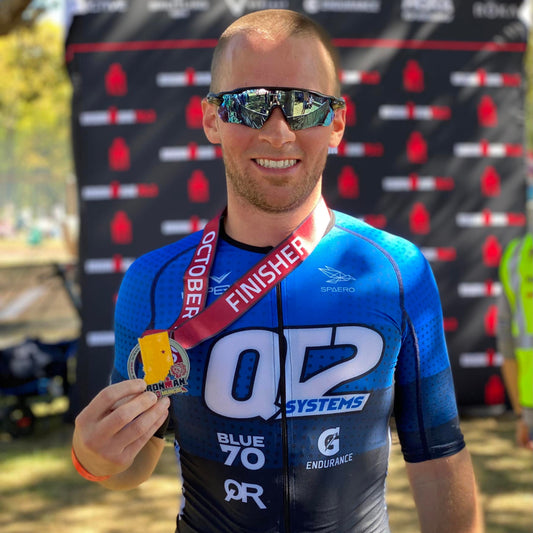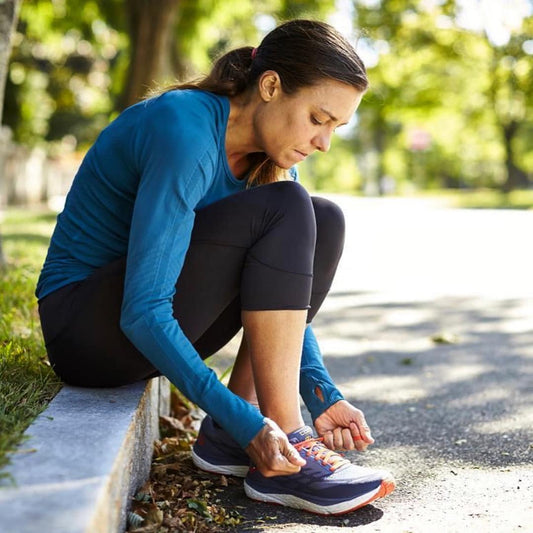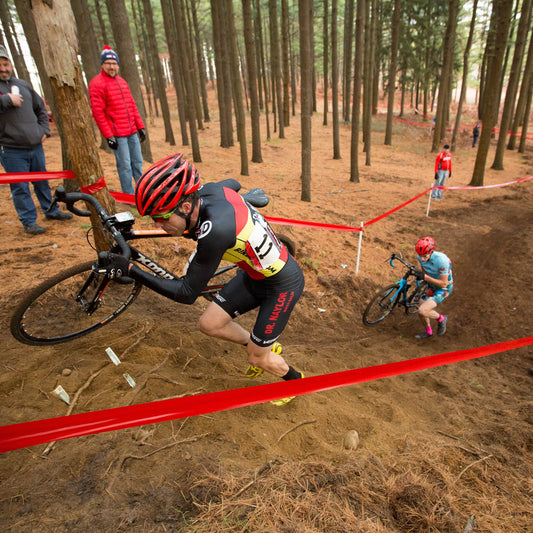Headed to 70.3 Worlds in Nice, France (or any European Ironman event, for that matter), and wondering about on course nutrition and how it compares to what you might normally use? Read on!
First, what is served on course: Enervit
It is the expectation that they will have three different Enervit products available:
- Enervit Sport ISOTONIC DRINK (orange flavor)
- Enervit Sport GEL (orange and raspberry flavor)
- Enervit Sport COMPETITION BAR (apricot and orange flavor)
Probably of most interest is the sports drink as most athletes rely heavily on on-course hydration. A few points to consider with the Enervit Sport ISOTONIC DRINK:
- It could be served in either 500 mL bottles or 750 mL bottles. 500 mL is roughly equal to 16 fluid oz. 750 mL is roughly equal to 25 fluid oz. Since most of us are used to the bigger sized bottles, just be aware that it is possible that you may need to take more bottles than you are accustomed to. If the bottles seem small to you, it’s because they are! As an example, if your fueling plan calls for four bottles in a 70.3, that would actually be four (or close enough) of the 750 mL bottles, or six of the 500 mL bottles. So, be aware of the size of the bottles that are being offered on the course.
- There is, both, less carbohydrate and less sodium in the Enervit drink, as compared to Gatorade Endurance (the drink served on-course in most North American Ironman races). When comparing bottles of the same relative size (500 mL or 16 oz) – Enervit has 25 grams carbohydrate/240 mg sodium compared to Gatorade Endurance’s 30 grams of carbohydrate/400 mg sodium. Or if comparing 750 mL/24 oz bottles - Enervit = 37 gram CHO/352 mg sodium and Gatorade Endurance = 44 gram CHO/600 mg sodium.
All this to say, if you are relying on the Enervit sports drink, you will want to make up some of the difference in lost carbohydrate and sodium. This can be accomplished by taking an extra gel (or two depending on your needs) and extra sodium via an electrolyte supplement, such as Gatorade Endurance’s Gatorlytes.
Although logistically it is easier to carry your own gels/chews/bars on course, that you are accustomed to using, IF you do end up using the Enervit gels and bars consider the following:
- The Enervit gels have only 10 mg of sodium, which is quite a bit lower than most other gels on the market. Again, you will need to make up the difference in sodium via electrolyte supplementation, if you choose to use these. They have 20 grams of carbohydrate, which is similar to Gatorade Endurance gels (also 20 grams of CHO) but just a bit lower than brands such as Gu, Huma and Clif (22-25 grams of CHO). The raspberry gel flavor has 20 mg of caffeine. The orange flavor is non-caffeinated.
- The Enervit bars are 23 grams of carbohydrate and 12 mg of sodium. They have roughly 1 gram of fat and 1 gram of protein. Neither flavor is caffeinated. These values are for 1 full bar.
If you plan to use the Enervit on course nutrition, do some calculations to ensure you are still getting in all of your needed sodium and carbohydrate! You should also consider ordering some of the Enervit to train with, so that you are accustomed to the flavors and consistencies of the various products. Don’t let differences in nutrition keep you from performing at your best! There is nothing inherently wrong with the Enervit product line, we just want to make sure that you understand that there are differences in it, relative to what you may be accustomed to. But, don’t stress! For the most part these differences can be accounted for through logical supplementation.
A final note around some “word on the street”…I have it on pretty good authority that very often the practicalities of serving the on-course Enervit sports drink and cola, in European races, can result in some level of watering down of these products. Because we do not typically include cola in our fueling plans, I am not as concerned with that. But, watered down sports drink is something that every athlete should be, at the very least, aware of. Obviously we cannot know where and when this may occur, but just be aware of the possibility that it may occur. In the days leading into the race try to get your hands on some properly mixed and concentrated sports drink, so that you can have a good sense as to what it should taste like, in order to meet the nutrient profiles discussed above. If on race day you find yourself taking ‘weak’ bottles from the course, then you may want to consider further supplementation. Not that you can really know how weak they will be, you can at least know that this may be something that needs to be considered as you race. It also may not need to be considered. But, your awareness of the situation will allow you to make the decision that is best for you, your fueling, and your race.
Have fun out there!
This post was written by QT2 Level 2 Coach, Beth Peterson.





